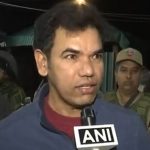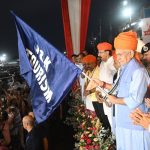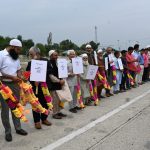The concept of “One Nation, One Election” has gained significant attention in India’s political landscape as a means to streamline the electoral process, reduce costs, and ensure continuity in governance. Spearheaded by a committee led by former President Ram Nath Kovind, this initiative seeks to synchronize the timing of Lok Sabha (national parliament) and state assembly elections across India. This article delves into the background, features, significance, challenges, and potential way forward for implementing “One Nation, One Election.”
In the early years of India’s independence in 1947, simultaneous elections for both the Lok Sabha and state legislative assemblies were the norm, in line with democratic principles. However, over time, the country’s political landscape evolved, leading to a divergence in the election cycles of different states due to changes in governments, political realignments, and constitutional issues.
The idea of “One Nation, One Election” is not new; it has been considered and recommended by various governmental and non-governmental bodies over the years. The Election Commission of India suggested working towards simultaneous elections as early as 1983, while the Law Commission of India recommended the synchronization of elections to Lok Sabha and state assemblies in 1999.
In recent years, “One Nation, One Election” gained renewed attention. After the 2019 elections, Prime Minister Narendra Modi emphasised the concept and proposed the formation of a committee to examine its feasibility. Additionally, in 2018, the Law Commission issued a draft report recognizing the need for constitutional amendments and legal changes to facilitate simultaneous elections.
As of 2023, the concept continues to be a subject of debate and discussion in India’s political landscape. However, opposition parties remain divided on the issue, expressing concerns about its impact on regional politics and the prominence of national leaders in the electoral process.
The central feature of “One Nation, One Election” is the synchronization of elections for both the Lok Sabha and state assemblies. This means that elections at these two levels of government would be conducted simultaneously on a single day or within a closely coordinated time frame.
The concept proposes the establishment of a common election cycle for all state assemblies and the Lok Sabha, typically every five years. This aims to reduce the frequency of elections and create a more streamlined and predictable electoral schedule.
Implementing “One Nation, One Election” would require significant amendments to India’s legal and constitutional framework. This includes changes to the Indian Constitution, the Representation of the People Act 1951, and the rules of procedure governing the functioning of the Lok Sabha and state legislative assemblies.
Conducting elections at different times for the Lok Sabha and state assemblies involves substantial financial expenditure. Simultaneous elections would significantly reduce election-related costs, benefiting the government, political parties, and candidates.
Frequent elections lead to a continuous cycle of Model Code of Conduct (MCC) enforcement, disrupting governance. Simultaneous elections would reduce the frequency of MCC enforcement, ensuring more effective and uninterrupted governance.
Holding multiple elections at different times requires a substantial deployment of manpower and resources. Simultaneous elections would enable more efficient allocation of these resources, enhancing the overall management of elections.
“One Nation, One Election” holds the promise of streamlining India’s electoral process, reducing costs, and ensuring uninterrupted governance. However, its implementation involves significant challenges that require careful consideration and a collaborative approach. Building political consensus, addressing legal complexities, conducting pilot projects, and educating the public are essential steps toward realizing this ambitious vision for India’s electoral future.
“One Nation, One Election” has captured the imagination of people across the country as a transformative concept that can bring efficiency and coherence to India’s electoral landscape. While challenges abound, the idea of synchronized elections has been welcomed by citizens who see the potential for reduced costs, uninterrupted governance, and a more streamlined electoral process. As India continues to debate and deliberate on the path forward, the widespread enthusiasm and support from the people underscore the significance of this ambitious initiative in shaping the nation’s electoral future.
The government’s decision to establish a High Level Committee (HLC) for examining the feasibility of simultaneous elections in India stems from a historical perspective. Initially, elections to the House of the People and State Legislative Assemblies were synchronized from 1951-52 to 1967. However, this practice was discontinued, resulting in frequent and disjointed elections, causing substantial expenses, diversion of security forces, and disruptions in developmental work. The Law Commission of India and a parliamentary committee have previously expressed the need to revisit simultaneous elections.
The HLC, chaired by Ram Nath Kovind, former President of India, and comprising various prominent members, including home minister Amit Shah and legal experts, aims to analyze and recommend a framework for holding simultaneous elections, including possible constitutional amendments, safeguards, logistics, and electoral identity card usage. Its headquarters will be in New Delhi, and it will begin work immediately with the support of the Ministry of Law and Justice. The HLC’s expenditures will be allocated separately by the government.
In the interest of inclusivity and ensuring a broader representation of perspectives in the One Nation One Election committee, it is essential to consider including members from various local political parties. These leaders can provide valuable insights and viewpoints that reflect the diversity of India’s political landscape. By involving representatives from different political parties, the committee can foster a more comprehensive and inclusive discussion on the feasibility and implications of simultaneous elections, ultimately leading to more well-rounded recommendations that consider the interests of all stakeholders at the national and regional levels.
The concept of “One Nation, One Election” proposes a fundamental shift in India’s electoral system by synchronizing the timing of Lok Sabha (national parliament) and state assembly elections across the entire country. While this idea holds great intuitive appeal in terms of streamlining the electoral process, reducing costs, and ensuring continuity in governance, its practical implementation faces several complex challenges.
India’s federal structure entails a delicate balance of power between the central government and individual states. Implementing simultaneous elections requires substantial amendments to the Indian Constitution and the Representation of the People Act, 1951, which could lead to debates over the distribution of authority. Some states might resist changes that they perceive as infringing upon their autonomy, leading to potential political conflicts.
India’s diverse political landscape consists of states with varying political cycles, regional dynamics, and election schedules. Coordinating elections across this diverse terrain is a logistical challenge. Different states have different reasons for preferring elections at different times, depending on local issues, political alliances, and administrative needs. Achieving a harmonized election schedule that respects these variations is a formidable task.
Building political consensus on the “One Nation, One Election” concept is a significant hurdle. Opposition parties express concerns about its impact on regional politics. They worry that synchronized elections might overshadow regional issues and promote a more presidential style of campaigning, favoring national leaders over regional ones. Convincing these parties to support such a transformative shift is essential but challenging.
Finally, the balance between efficiency and fairness in elections is a nuanced challenge. Reducing the frequency of elections through synchronization can save costs and minimize disruptions caused by the Model Code of Conduct (MCC) enforcement. However, it must be done while maintaining the integrity of the electoral process, ensuring transparency, and upholding democratic values.
(Author is Professor & Chairman of Centre for Narendra Modi Studies (CNMS), Bharat. Email: [email protected]. Former Head & Group Editor, Roznama Rashtriya Sahara (National Urdu Daily) & Aalami Sahara TV (Urdu News Channel), Former Media Advisor, Aligarh Muslim University, Aligarh. Email: [email protected]








